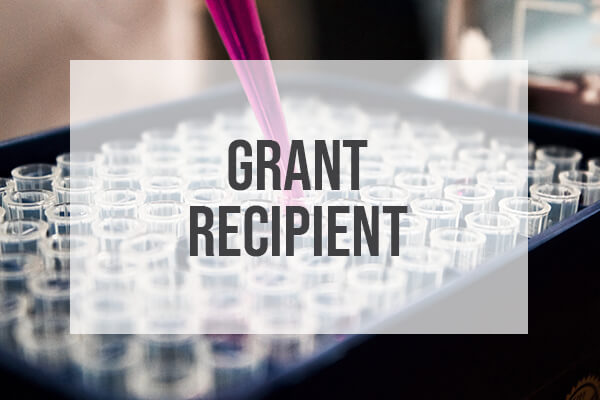Food Nutrition & Health Team, Food & Bio-based Products Group, AgResearch Ltd, Grasslands,
Palmerston North, New Zealand
Dairy Foods Team, Food & Bio-based Products Group, AgResearch Ltd, Ruakura, Hamilton, New Zealand
Current affiliation: CSIRO Animal, Food & Health Sciences, Armidale, NSW, Australia
Current affiliation: Arla Strategic Innovation Centre (ASIC), Cultures & Fermentation Team, Denmark
Abstract
Results from large multicentre epidemiological studies suggest an association
between the consumption of raw milk and a reduced incidence of allergy and asthma
in children. Although the underlying mechanisms for this association are yet to be
confirmed, researchers have investigated whether bacteria or bacterial components
that naturally occur in cow’s milk are responsible for modulating the immune system
to reduce the risk of allergic diseases. Previous research in human and mice suggests
that bacterial components derived from the maternal intestine are transported to
breast milk through the bloodstream. The aim of our study was to assess whether
a similar mechanism of bacterial trafficking could occur in the cow. Through the
application of culture-independent methodology, we investigated the microbial
composition and diversity of milk, blood and feces of healthy lactating cows. We
found that a small number of bacterial OTUs belonging to the genera Ruminococcus
and Bifidobacterium, and the Peptostreptococcaceae family were present in all three
samples from the same individual animals. Although these results do not confirm
the hypothesis that trafficking of intestinal bacteria into mammary secretions does
occur in the cow, they support the existence of an endogenous entero-mammary
pathway for some bacterial components during lactation in the cow. Further research
is required to define the specific mechanisms by which gut bacteria are transported
into the mammary gland of the cow, and the health implications of such bacteria
being present in milk.
Introduction
Epidemiological studies have shown that growing up on a farm is associated with a lower
risk of developing allergy (Braun-Fahrl¨ander et al., 1999; Ehrenstein et al., 2000;Waser et
al., 2004; Alfv´en et al., 2006; Mutius & Vercelli, 2010) and that the consumption of raw
milk is strongly correlated with this effect (Perkin & Strachan, 2006; Waser et al., 2007).
The commercialisation of fresh raw (unpasteurised) milk remains a controversial issue (Massie, 2014; Astley, 2014), and although its consumption has been discouraged due to
potential health risks associated with pathogens (Allerberger et al., 2003), there is a growing body of evidence suggesting that consumption of unprocessed milk decreases the risk of asthma in children (Riedler et al., 2001; Loss et al., 2011). The mechanism for this effect is not yet fully understood, but it may be related to bacteria or bacterial components in the milk that modulate the immune system and which are modified during milk processing (Gehring et al., 2008;Hodgkinson,McDonald&Hine, 2014). Although rural families generally skim or heat raw milk before consumption, this milk differs in many aspects from commercially available milk. Whereas commercial milk is usually homogenised and pasteurised, milk obtained fromthe farmfor local consumption is not processed in these ways, potentially resulting in a higher microbial load. Results from PASTURE, a large global study examining the effects of farm and urban living on asthma and allergy, showed no differences in endotoxin levels of raw farm and commercially
processed milk (Lluis et al., 2014); however, samples were not analysed for other bacterial
components or presence of viable organisms.
It has been reported that human breast milk is not completely sterile (Heikkil¨a & Saris, 2003; Mart´ın et al., 2003; Beasley & Saris, 2004; Jim´enez et al., 2008), and that bacterial components derived from the maternal intestine are transported to the lactating breast by phagocytic cells in the blood (P´erez et al., 2007). This fascinating observation suggests that milk acts as a source of natural inoculum provided by the mother for the breast-fed
newborn that programs the neonatal immune system to respond appropriately when challenged with specific environmental and dietary bacterial antigens.
We hypothesise that a similar mechanism of bacterial trafficking fromthe intestinal tract
to the mammary gland, previously reported in lactating mothers, also occurs in the cow, contributing to the bacterial components found in raw cow’s milk and facilitating bacterial imprinting of the neonatal immune system. The identification of bacteria or bacterial components in unprocessed cow’s milk thought to originate from the intestinal tract would support this hypothesis. Therefore we investigated the microbial composition of feces, milk leukocytes and blood leukocytes in lactating cows by pyrosequencing barcode-tagged 16S rRNA amplicons to identify bacterial groups common to all three microbial pools.
Bacterial imprinting of the neonate via trafficking of gut bacteria into mammary secretions in the cow may also contribute to the protective effects that consuming raw cow’s milk has been shown to have on development of allergy in children. An understanding of the mechanisms by which gut bacteria in milk imprints the neonatal immune system may provide the foundation for new strategies on how to shape the intestinal microbiota of the infant to aid in the prevention of immune disorders.
Would you like to support the work of the Foundation?
Contact us for more information, or simply make a donation.




